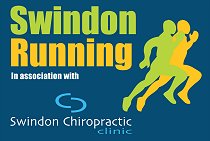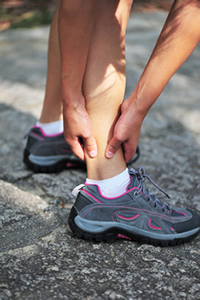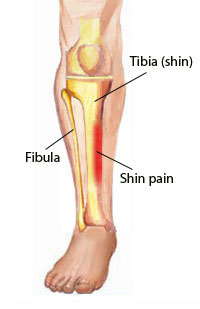RUNNING: How To Avoid InjurySwindon Chiropractic Clinic's full guide on how to avoid injury when running incl. shin splints explanation - WATCH VIDEO
The Swindon half marathon in aid of the British Heart Foundation is nearly here (13 October), and it's one of the more strenuous half marathon courses.
Therefore, it is essential that the entrants are fully prepared for what they face on race day.
If you're thinking of taking part or have already started training, make sure you read Swindon Chiropractic Clinic's advice below on how to avoid hurting yourself when you're out on the road.
How to Avoid Injuries
The majority of running injuries occur from overtraining. Therefore, the general advice is to avoid doing too much too soon.
Becoming good at long distance running is a challenge, to excel, a lot of miles have to be run, and this will naturally increase the risk of injury.
The key to reduce the risk of injury is to get enough rest and not to load the same structures all the time. Cardiovascular training can be done in many different ways.
For example, low impact activities such as swimming, static exercise bikes, cross trainers and step machines.
Here are a few key points to consider whilst preparing a training regime:
- Progress in mileage and speed should be gradual. An unrelenting increase in mileage from one week to the next will ultimately result in injury.
- Mileage should only be increased by approximately 10% per week. Every third week drop back a small amount.
- Intersperse hard days and easy days each week.
- Devote one or two days each week to either rest or non-running activities to allow the body to recover.
- Ensure that stretches and a warm up are done before the run, and then stretch and warm down after the run.
- Book an appointment with one of our Chiropractors at Swindon Chiropractic Clinic. Our Chiropractors will give tailored advice on running posture, technique, stretches and tips on a training regime. Many running injuries respond very well to Chiropractic adjustments and treatment. The treatments aims to encourage efficient joint motion, increase flexibility, reduce muscle tightness and improve alignment.
- Finally, remember pain is a warning. Stop running and consult a Chiropractor!
Running Related Injuries
There are two typical groups of trauma related to running; acute trauma or overuse. Acute trauma is sudden, such as a torn ligament or a broken bone.
The most frequent problem encountered at the Swindon Chiropractic Clinic is an injury through overuse.
Here is an overview of some of the injuries we see at Swindon Chiropractic Clinic related to running.
Plantar Fasciitis
The cause of plantar fasciitis is stretching or tearing the broad connective tissue on the base of the foot (the plantar fascia) which goes from the base of the toes and attaches to the heel.
The symptoms are pain in a specific area of the bottom of the foot towards the heel, possibly radiating towards the ball of the foot.
The foot feels tender early in the morning and becomes less painful with movement. It is often associated with pronation and a fallen arch.
Prevention: Regular stretching of the calf and Achilles tendon. It is also wise to have your feet biomechanically assessed when you are having your running shoes fitted. Orthotics, insoles, and the appropriate running shoe can then be recommended.
Bursitis or Tendonitis
These problems are commonly seen in the knee and ankle. Bursitis is an irritation, or inflammation of the bursa. The bursa is a fluid filled sac which sits between the tendons and bony structures to protect the tendons from friction.
Tendonitis is irritation or inflammation of the tendon. Causes can include trauma, pressure or dysfunction. Symptoms will include pain and stiffness on movement with no visible swelling at first, but swelling later as the condition worsens.
Achilles Tendonitis
The Achilles tendon is the connection between the heel and the bulk of the calf musculature. It is a very common site for disabling injury for runners.
To prevent a chronic problem, it is essential that you do not run through the pain. If you suspect you have a problem with your Achilles tendon, get it treated as soon as you can.
Prevention: Regular stretching of the calf musculature and the Achilles tendon. Ensuring that you are running in properly fitted running shoes, using a soft heel lift if indicated.
Shin Splints
Shin Splints is typically an injury caused by repetitive trauma to the connective tissue that surrounds the tibia in the lower leg. There are many causes of shin splints, often it is several causes together.
This may include faulty posture, poor shoes, fallen arches, insufficient warm-up, muscle fatigue, exercising on unyielding surfaces or poor running mechanics.
The symptoms can include pain or discomfort on the front, the inside and/or the outside surface of the shin bone, or directly over the shin bone.
Prevention: You can cause more damage if you try to run through the pain, so stop running! Properly fitted running shoes with good shock absorbing features will help reduce the likelihood of shin splints.
Watch the video below for Swindon Chiropractic Clinic's advice & tips on Shin Splits...
Stress Fracture
These small fractures occur due to excessive stress (continuous overloading of the bone), or an increase in intensity or distance running, resulting in gradual breakdown of the structure of the bone.
The symptoms include pain, which occurs typically in the foot and lower leg, which becomes more intense with weight bearing activity. X-rays are used to confirm the diagnosis. The fracture will often not be visible initially but becomes obvious up to two weeks after the initial injury.
Prevention: When training for the half marathon you should gradually increase your mileage. Make sure you incorporate adequate rest intervals into your training regime, this will help to reduce the repetitive loads on vulnerable areas. Properly fitted running shoes.
Ankle sprain
Running on level ground rarely results in an ankle strain, however if you are cross country running, trail running or even if you step into one of the many pot holes could potentially lead to an ankle sprain.
Prevention: This is fairly obvious, be mindful if you are running on uneven surfaces, make sure you are running in the appropriate footware. If you sprain your ankle then you should treat it immediately. Rest, Ice, Compression, Elevation.
Ice should be applied for approx 15 minutes, with at least 20 minute interval between each application.
Runners Knee
This condition is essentially a collection of different ailments that cause pain around the front of the knee. These conditions include misalignment of the knee cap, complete or partial dislocation, injury, tightness or weakness of the thigh muscles, and flat feet.
All of these conditions lead to inappropriate levels of pressure being exerted on the soft cartilage of the knee cap, or other soft tissue structures at the front of the knee.
The pain is generally experienced at the front of the knee during running, but is also felt after sitting for a prolonged period of time with the knee bent.
Prevention: It is essential to stretch before and after running, ensure that you gradually increase the distance that you are running, run in proper running shoes and make sure you are running properly. We will be happy to advise you on proper running form at the Swindon Chiropractic Clinic.
Iliotibial Band Syndrome
Iliotibial band syndrome is one of the leading causes of lateral knee pain in runners. The iliotibial band is a thick band of fascia on the outside of the knee. It extends from the outside margin of the pelvis, over the hip and the knee and inserts just below the knee. This band is essential in stabilising the knee during running.
When in use, it will move forward and back, rubbing across the outside of the femur. This continuous rubbing, combined with repeated bending of the knee during running may cause the area to become inflamed.
The symptoms usually start just above the knee then radiates up the outside of the thigh. Pain doesn't always start immediately during activity, but may intensify over time. Pain is most commonly experienced when the foot strikes the ground.
Prevention: Warm up before your training. Walk the first quarter to half a mile to loosen things up. If you find that the outside of the soles of your running shoes are particularly worn, replace them. Try and run on even surfaces, for example, where it is safe to do so, run in the middle of the road where there is no camber.
The Swindon Chiropractic Clinic team hopes that all entrants have a good and injury free run on the 13 October!
For any information please contact the Swindon Chiropractic Clinic on 01793 820599 or visit their website via the link below.
|
|
||||||||
|
||||||||
|
||||||||
|
||||||||
|
||||||||
|
||||||||
|
||||||||
|
||||||||
|
||||||||
|
||||||||
|
||||||||
|
||||||||
|
||||||||
|
||||||||
|
||||||||
| Swindon Chiropractic Clinic - website | ||||||||
|
|||||||||
























